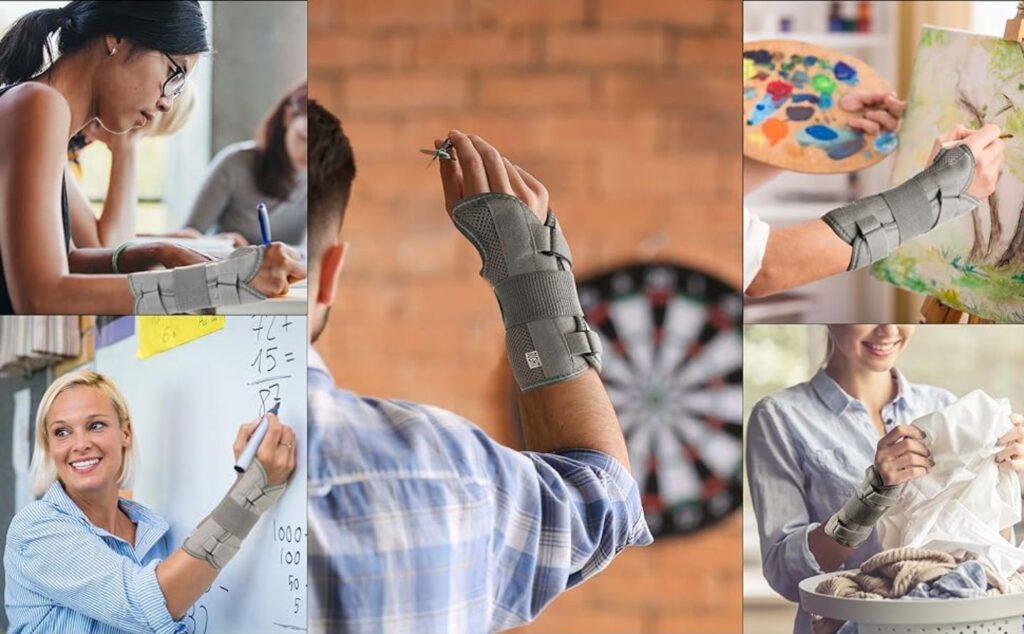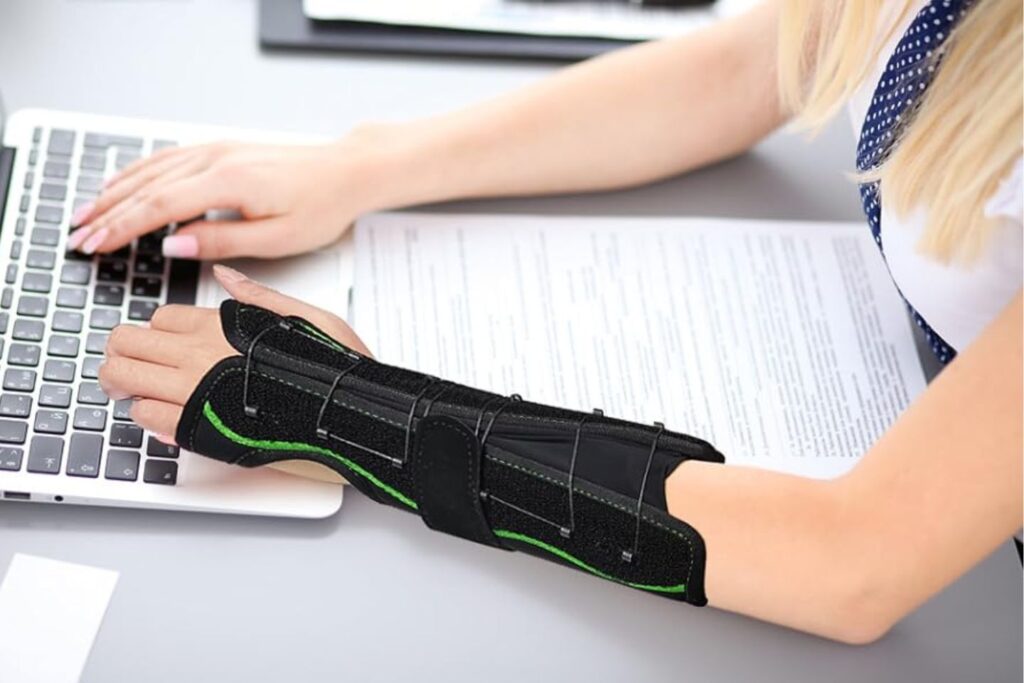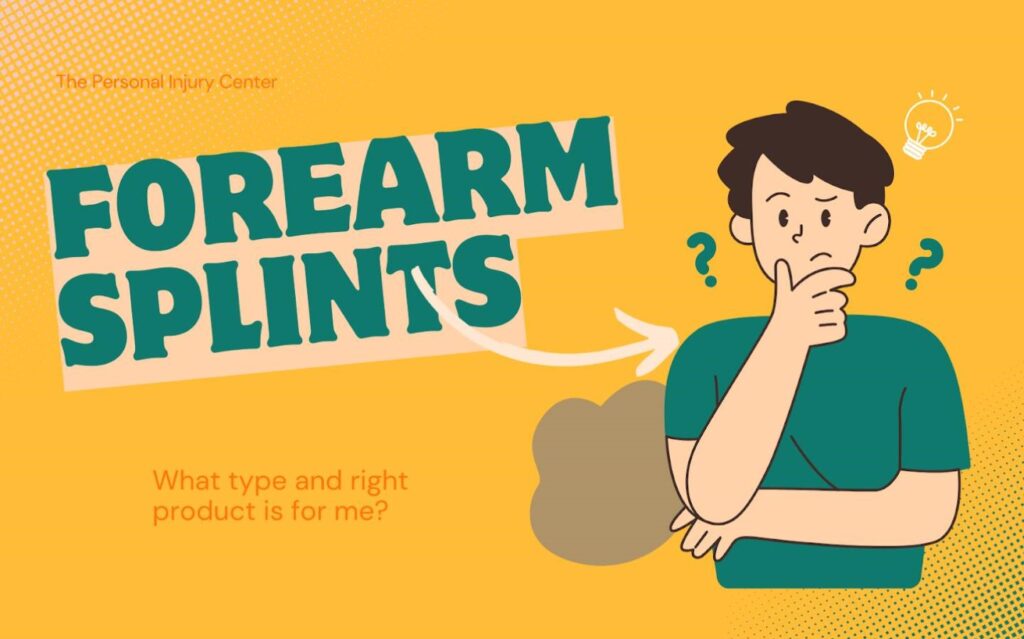When it comes to managing forearm injuries such as fractures, sprains, and tendonitis, choosing the right forearm splint is crucial for your recovery and comfort. Forearm splints provide the necessary support and immobilization, which are key to minimizing pain and promoting healing. The best forearm splints are designed with functionality and fit in mind, ensuring that you can carry on with daily activities with as little inconvenience as possible.
Understanding Forearm Splints


When you encounter forearm discomfort potentially associated with splinting, an understanding of the forearm’s anatomy, the common causes of splints, and the typical symptoms and diagnosis process is essential.
Anatomy of the Forearm
Your forearm is composed of two main bones, the radius and ulna, and multiple muscles, nerves, and tendons that enable movement and dexterity. All of these components work in concert to allow you to rotate your arm, bend and flex your wrist, and control your fingers.
Causes of Forearm Splints
Forearm splints often arise due to repetitive stress or overuse of the forearm muscles and tendons. Activities that can lead to this condition include weight lifting, gymnastics, and prolonged computer work. Injuries such as fractures or a direct blow to the arm can sometimes precipitate splinting.
Symptoms and Diagnosis
If you’re experiencing forearm pain, you might notice tenderness, swelling, or mild bruising along the inside of the forearm. Diagnosis typically begins with a physical examination and may be followed by imaging tests like X-rays or MRI if a fracture or soft tissue injury is suspected. A proper assessment is crucial for determining the cause and appropriate treatment.
Types of Forearm Splints
When considering a forearm splint, you have various options catering to different needs and injuries. Choosing the right type depends on the level of support and mobility you require.
Rigid Splints
Rigid splints are primarily used for immobilizing bones and joints following fractures or serious injuries. They are made of sturdy materials such as plaster or fiberglass and provide excellent support to ensure proper healing.
Flexible Splints
Flexible splints differ as they allow for some movement. These splints, constructed from lighter materials like neoprene or elastic fabrics, are ideal for stabilizing the forearm while maintaining flexibility.
Custom-Fit Splints
Custom-fit splints are tailored to your exact forearm contours for a more personalized fit. Healthcare professionals often use thermoplastics that mold to your forearm’s shape, ensuring maximum comfort and effective support during your healing process.
Here are some product recommendations for a forearm splint:
TODDOBRA Wrist & Forearm Splint Brace
- WRIST FOREARM SPLINT FOR JOINT SUPPORT – Each ulnar wrist brace can be used for common problems such as carpal tunnel syndrome, arthritis, sprains, injury recovery, improving natural wrist position, ganglion cysts, tendonitis, RSI, and more.
- SNUG BREATHABLE MATERIAL : the wrist forearm immobilizer brace is constructed from a lightweight neoprene blend, ensures the hand and wrist remain cool and dry.comfortable feel and protect your skin,Comfortable for using during the day and night.
- REMOVABLE WRIST SPLINT: A lightweight, durable wrist splint for carpal tunnel stabilizes the wrist in a neutral position for optimal relief. The wrist brace night is also removable, allowing you more flexibility while providing adequate wrist support.
The TODDOBRA wrist and forearm splint are among the options you can choose from. It provides breathable support and comfort that allows you to even wear it at night. It features an adjustable design making it easy to get the compression you feel most comfortable in. Its reversible feature accommodates both left and right hands, eliminating the need for separate braces.
| What We Like: | What We Don’t Like: |
Supportive for a variety of wrist conditions Breathable material enhances comfort Ambidextrous design adds versatility | Initial fitting may be challenging Material may not cater to all skin types Some may find better-suited options locally |
ComfyForearm Brace
- Forearm Immobilizer: Forearm splint helps relieve ache and swelling, including forearm surgeries and sprains. Circumferential wrist straps and two forearms provide compression and support.
- Removable Splint: The three sided solid metal splint is designed to surround the entire arm for better support. For greater flexibility, each splint can be removed.
- High Quality Material: The arm brace is made of OK cloth, soft and breathable, and lightweight, extremely comfortable to wear. Ideal for night or all day use.
The ComfyForearm Brace features three-sided metal splints for support and can be adjusted for comfort. It’s made of breathable OK cloth for all-day wear, including during sleep. However, sizing may be an issue for larger forearms, and the Velcro closure system might wear out with frequent adjustments.
| What We Like: | What We Don’t Like: |
Customizable support with removable splints Breathable OK cloth material enhances comfort Versatile for sports use and post-surgery recovery | Limited size options may not fit everyone perfectly Some users find the Velcro fasteners lack durability Total reviews may not fully represent user experience |
Tynor Wrist & Forearm Splint
- It provides perfect immobilization to wrist and forearm with long length of brace and removable splint.
- Excellent aesthetics, optimum compression & customizable fititng enhances user experience.
- Built in opening helps in better pair relief and further enhances comfort.
The Tynor Wrist & Forearm Splint is a great option to go if you’re looking to try out a forearm splint. It gives you enough immobilization to help your injury heal faster. It’s long enough to cover your forearm injuries and has a removable splint, making it easier to immobilize.
This splint’s built-in opening helps improve pain relief, which enhances comfort. It is easy to use, breathable, long functional lift, lightweight, and durable. The Tynor Wrist & Forearm Splint is designed for adults and can be used for arthritis, carpal tunnel, gardening, pain relief, sleep support, sprain, swelling, and tendonitis.
| What We Like: | What We Don’t Like: |
Provides effective stabilization Adjustable for customized fit Lightweight design for comfort | May feel bulky under clothing Limited breathability in some models Velcro straps may wear out over time |
ZJchao Wrist Brace
- Fracture Splint Applicability: Suitable for sports injuries or repetitive stress injuries. Prevent muscle ache and post operative fixation of joints. Arm strap can provides sufficient support, firm and comfortable, can effectively relieve pain, easy to use,easily adjust the tightness you want and get strong support.
- Wrist Support Braces Function: Helps relieve ache and swelling, including forearm surgeries and sprains. Circumferential wrist straps and two forearms provide compression and support. brace for men and women is soft enough to wear with bare arms and also reliefs joints during sleeping.
- Wrist Wraps Breathable: Ideal for night or all day use, wicking and breathable keeps arms cool and dry. Splints for cubital tunnel are very comfortable and super breathable. The inner sleeve your arm from those straps
Looking for a tailored-fit forearm splint? ZJchao Wrist Brace instantly provides a reassuring sense of forearm stability. It has a removable metal splint that allows you to have more customizable support that can accommodate your needed comfort and stability. What makes this product stand out is that its fabric has moisture-wicking properties besides being breathable. Hence, you can wear it to workouts or humid places without feeling icky.
The brace’s lightweight and portable nature are definite advantages for active individuals. It provides support without impeding movement or adding unnecessary weight. Adjusting to the straps and compression may require some time, but once you’ve found the right fit, you’ll likely appreciate the optimal balance of firmness and flexibility.
| What We Like: | What We Don’t Like: |
Customizable support with a removable splint Moisture-wicking and breathable for all-day comfort Lightweight and portable design suitable for active lifestyles | May be bulky for some users Limited sizing options Initial adjustment period necessary for optimal comfort |
Features of the Best Forearm Splints


When selecting a forearm splint, you want a product that provides excellent support, comfort, and durability. Each of these qualities directly contributes to the effectiveness and wearability of the splint.
Material and Comfort
The best forearm splints are crafted from breathable materials such as lightweight foam or a neoprene blend, which help to regulate temperature and minimize sweating. Comfort is enhanced with padding that contours to your arm, reducing the risk of pressure points.
Adjustability
Adjustability is crucial for a personalized fit as it allows you to tighten or loosen the splint. Look for options with velcro straps that make adjusting the splint straightforward, ensuring it can accommodate varying degrees of swelling and provide the right compression level.
Durability and Quality
High-quality splints are designed to withstand daily use without losing their shape. They often feature reinforced stitching and water-resistant materials to prolong their life. A splint that maintains its integrity over time offers consistent support and protection for your forearm.
Frequently Asked Questions
Forearm splints can be puzzling, but with the right information, you can navigate your way to an effective recovery. Below are specific answers to common inquiries that will help you understand this subject better.
How can I identify symptoms that indicate the need for a forearm splint?
If you’re experiencing pain, swelling, or reduced range of motion in your forearm following an injury, these signs may point to the need for a forearm splint. It’s essential to assess your symptoms and consult a professional to get the right treatment.
What are the different types of forearm splints available for fracture treatment?
The market offers various splints, such as the commonly used sugar-tong splint, which ensures adequate immobilization for certain types of forearm fractures. Volar-forearm splints are another option, each tailored to specific fracture patterns.
What is the recommended way to alleviate pain caused by forearm splints?
Managing pain from forearm splints often involves immobilization, icing, and over-the-counter pain relievers. Techniques and recommendations from sources like UpToDate outline the importance of proper splinting to reduce discomfort.
In cases of tendonitis, which forearm brace is considered the most effective?
For tendonitis relief, a brace that provides adequate support while minimizing strain on the tendons is key. The most suitable type can vary based on the individual’s condition, but compression braces are commonly recommended for their effectiveness in reducing tendon strain.
How quickly can treatment with a forearm splint expedite the healing process?
The healing timeline can differ based on the injury’s severity, but using a forearm splint can facilitate quicker healing by immobilizing and protecting the injured area. It’s important to follow a healthcare provider’s guidance to maximize recovery speed.
What is the proper method for applying a splint to a fractured forearm?
To apply a splint correctly, you must first position the forearm in a neutral state or with a slight flexion. Detailed guidance on forearm splinting illustrates the step-by-step procedure, from preparation to secure splint placement.
Broken Arm Injury? The Personal Injury Center Can Help You
A broken arm from a slip and fall can leave you with unexpected medical bills and a frustrating recovery process, like wearing a forearm splint for weeks. The Personal Injury Center can connect you with qualified personal injury lawyers who understand the complexities of these claims. Don’t navigate this alone. Get your case evaluated today!
Disclaimer: Last update on 2024-07-26 / Affiliate links / Images from Amazon Product Advertising API.
This content is provided solely for educational reasons and should not be seen as medical guidance. It’s important to consult with a healthcare expert prior to making any changes to your health regimen, including dietary adjustments or the use of supplements.
Pages on this website may contain affiliate links. As an Amazon Associate, we receive a commission from qualifying purchases. This commission is at no extra cost to you.



